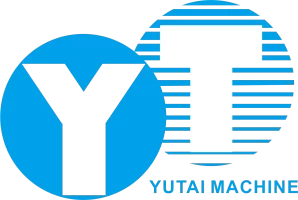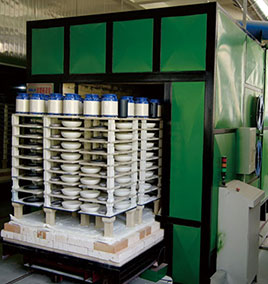
Le processus de moulage des produits céramiques est indissociable de la cuisson à haute température. Le four est un équipement essentiel de toute la chaîne de production de céramique, qui influe directement sur la qualité de la céramique, le rendement et le niveau de consommation d'énergie. Pour les fabricants de céramiques, la maîtrise de l'utilisation des fours est la clé de l'amélioration de l'efficacité de la production et de la maîtrise des coûts. Yutai vous aidera à comprendre les fours à céramique et comment utiliser un four pour la céramique, et vous présentera nos fours automatisés.
Connaissances de base du four
Les fours sont des équipements essentiels pour la cuisson à haute température des céramiques. Ils peuvent être divisés en plusieurs types en fonction de leur structure et de leur fonction :
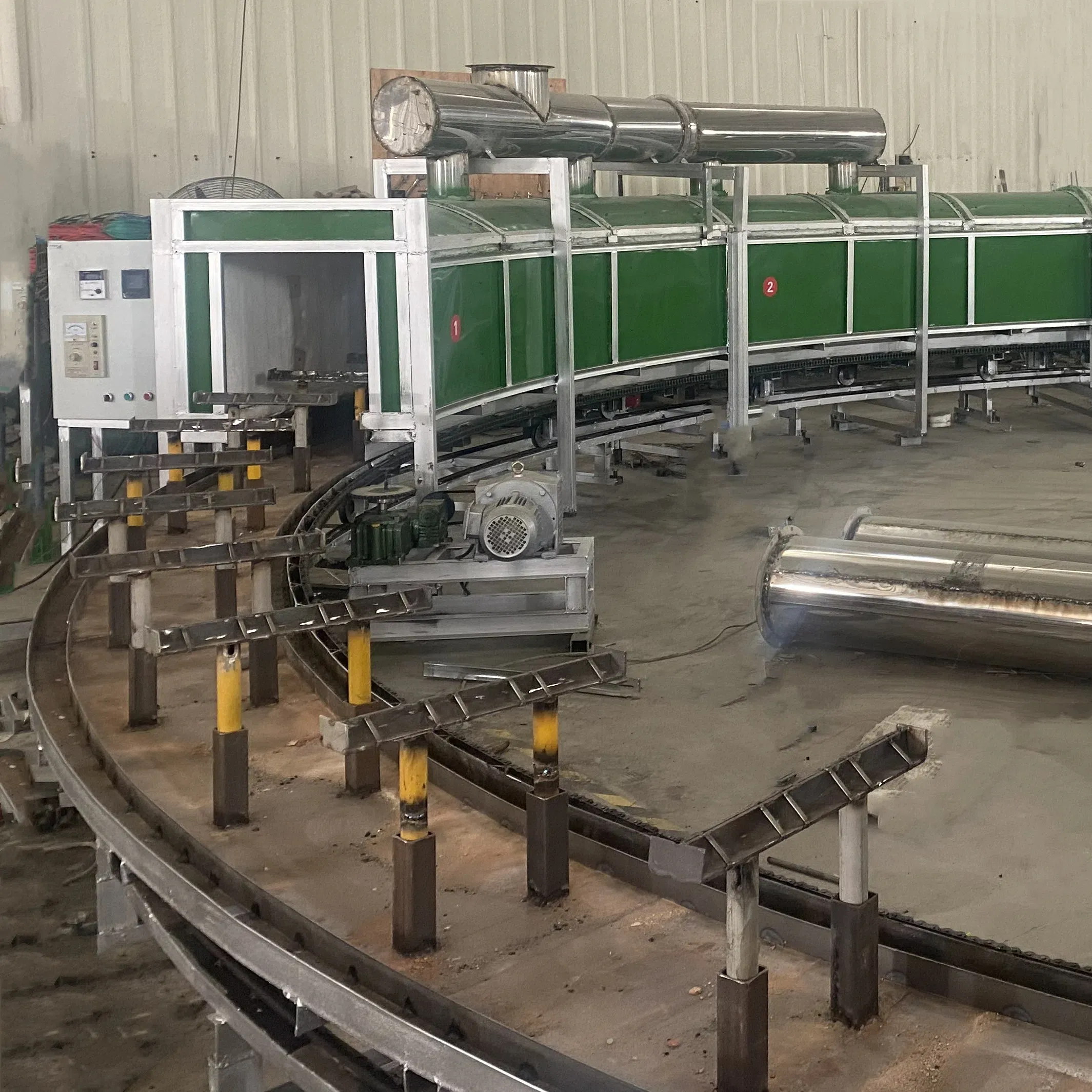

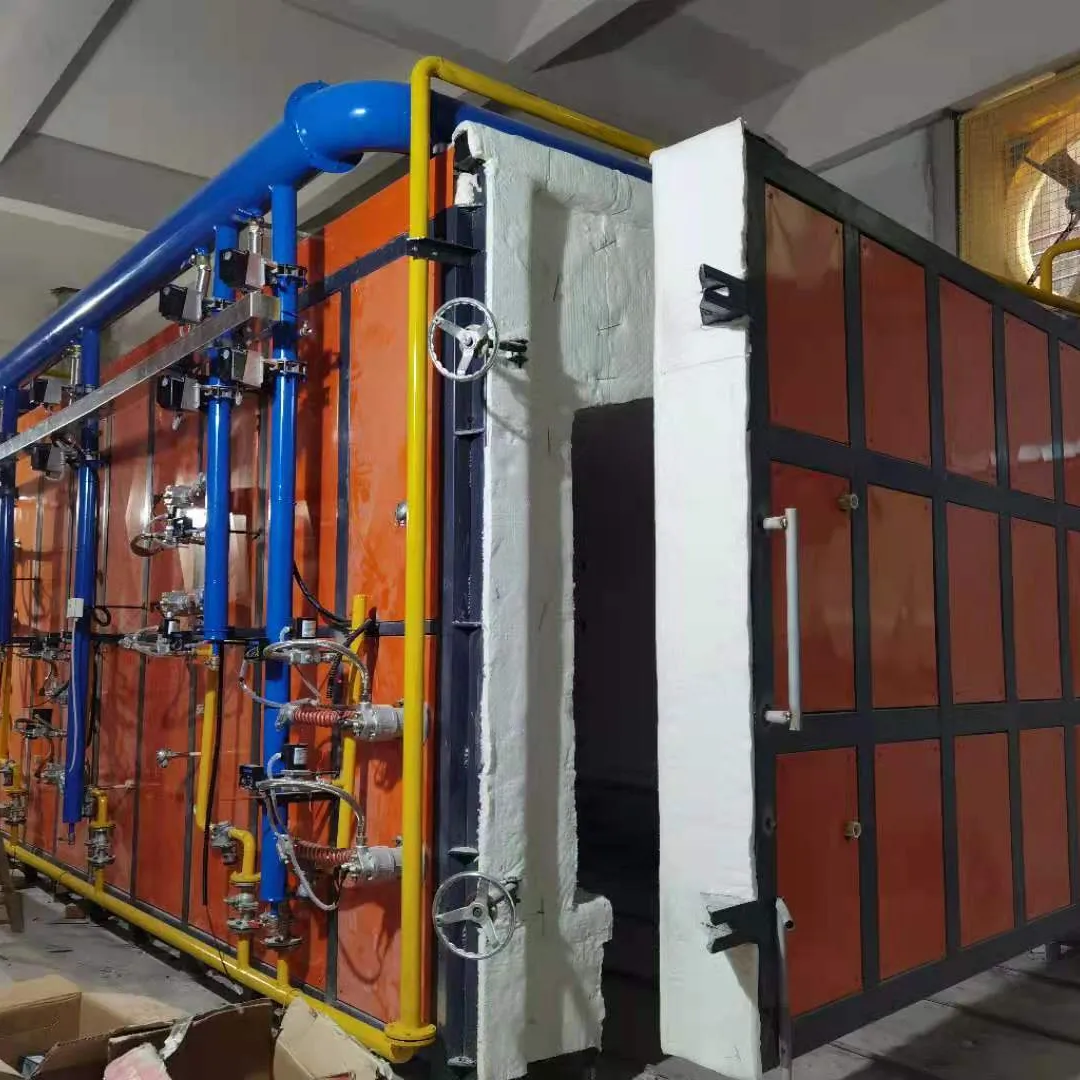
Four tunnelLa production en continu à grande échelle : idéal pour la production en continu à grande échelle, taux de récupération de la chaleur élevé, parfait pour le câblage automatisé.
Four à rouleauxStructure de la bande transporteuse : conception pour les lignes de production à moyenne et haute vitesse, vitesse de chauffage et de refroidissement rapide.
Four à navette: accommodates multi-category, small-batch production and ensures flexible operation.
Yutai se concentre sur équipement de four à céramique automatisé Elle peut fournir des solutions personnalisées en fonction des besoins de la chaîne de production afin d'améliorer l'efficacité de la production et la qualité des tirs.
Précautions à prendre avant l'enfournement de la pièce brute en céramique

Le travail de préparation avant la cuisson influe directement sur l'effet de la cuisson :
- L'ébauche en céramique doit être soigneusement séchée pour éviter les fissures dues à l'humidité résiduelle.
- Lors du chargement du four, l'espacement doit être modéré et la disposition doit être uniforme pour assurer la circulation de l'air chaud.
- Utilisez des outils de cuisson intacts et propres, tels que des affûts ou des plaques de support, afin de garantir un soutien stable.
- Régler la courbe de cuisson appropriée en fonction de la catégorie de céramique et du procédé d'émaillage.
Four automatique Yutai Le système de contrôle de soutien peut définir plusieurs programmes de contrôle de la température pour aider les utilisateurs à compléter facilement les paramètres du processus.
Comment utiliser un four pour la céramique ? Analyse du processus de cuisson
Le processus de cuisson est généralement divisé en quatre étapes :
- Phase de préchauffage (de la température ambiante à 600°C)
Éliminez l'humidité de l'ébauche de céramique pour éviter qu'elle ne se fissure. La montée en température doit être lente et stable.
- Phase de cuisson (600°C à plus de 1200°C)
Au cours de cette étape, l'émail fond et la céramique se vitrifie pour former une structure solide. La vitesse de chauffage et les conditions atmosphériques doivent être strictement contrôlées.
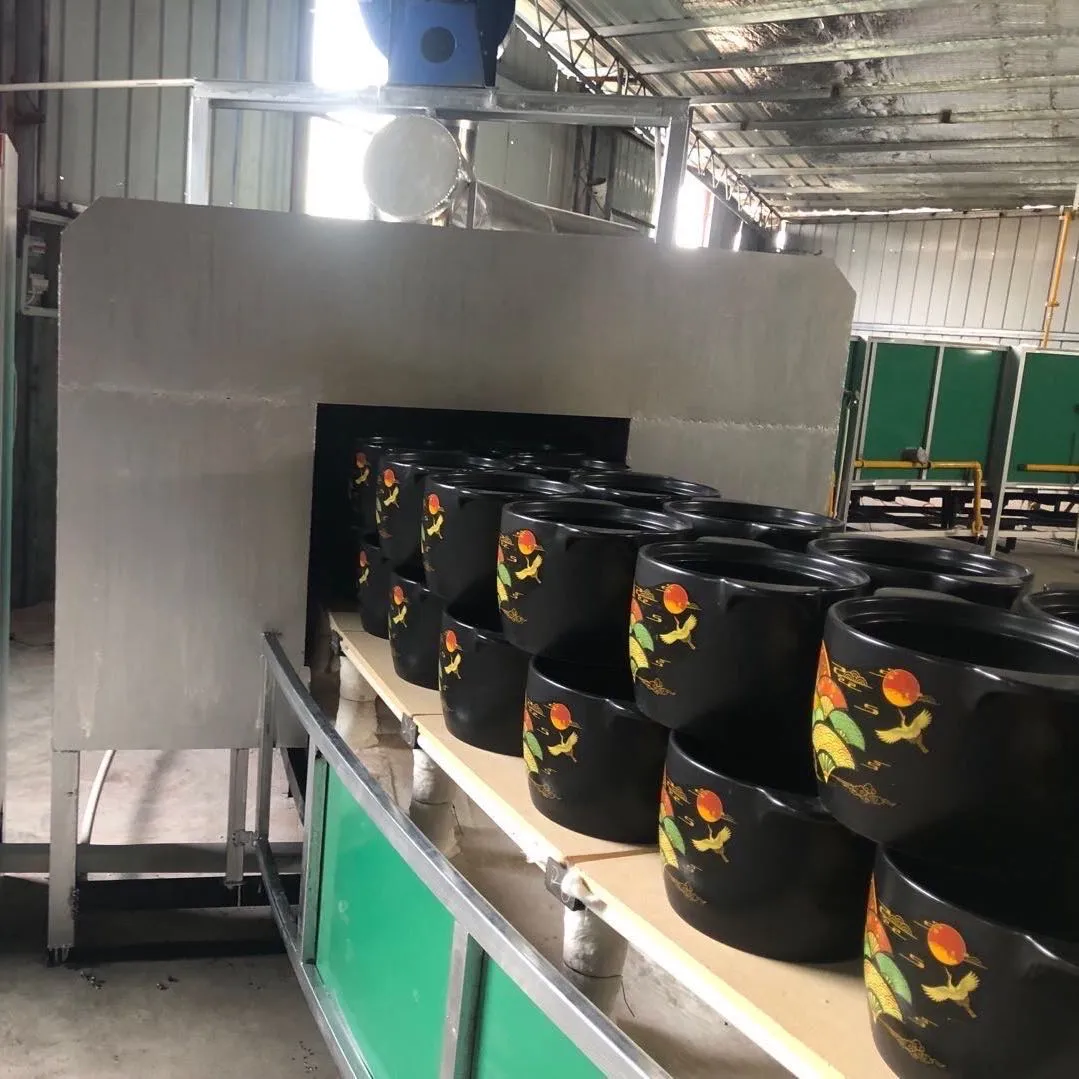
- Phase d'isolation
Maintenir la zone cible à haute température pendant un certain temps pour s'assurer que le produit est bien fritté et que la couleur est stable.
- Phase de refroidissement
Le taux doit être contrôlé pendant le processus de refroidissement afin d'éviter les fissures ou les déformations dues aux contraintes thermiques.
Notre four à céramique dispose d'un contrôle automatique de la température, d'un système d'alarme et d'une fonction d'enregistrement de la température afin de garantir la qualité stable de chaque lot de produits céramiques.
Problèmes courants de cuisson de la céramique et solutions
Les problèmes les plus fréquents et les solutions apportées au cours du processus de cuisson sont les suivants :
Fissuration de la céramique : Cela est généralement dû à un séchage insuffisant ou à un chauffage trop rapide. Il est recommandé de prolonger le temps de séchage et d'utiliser une courbe de chauffe plus douce.
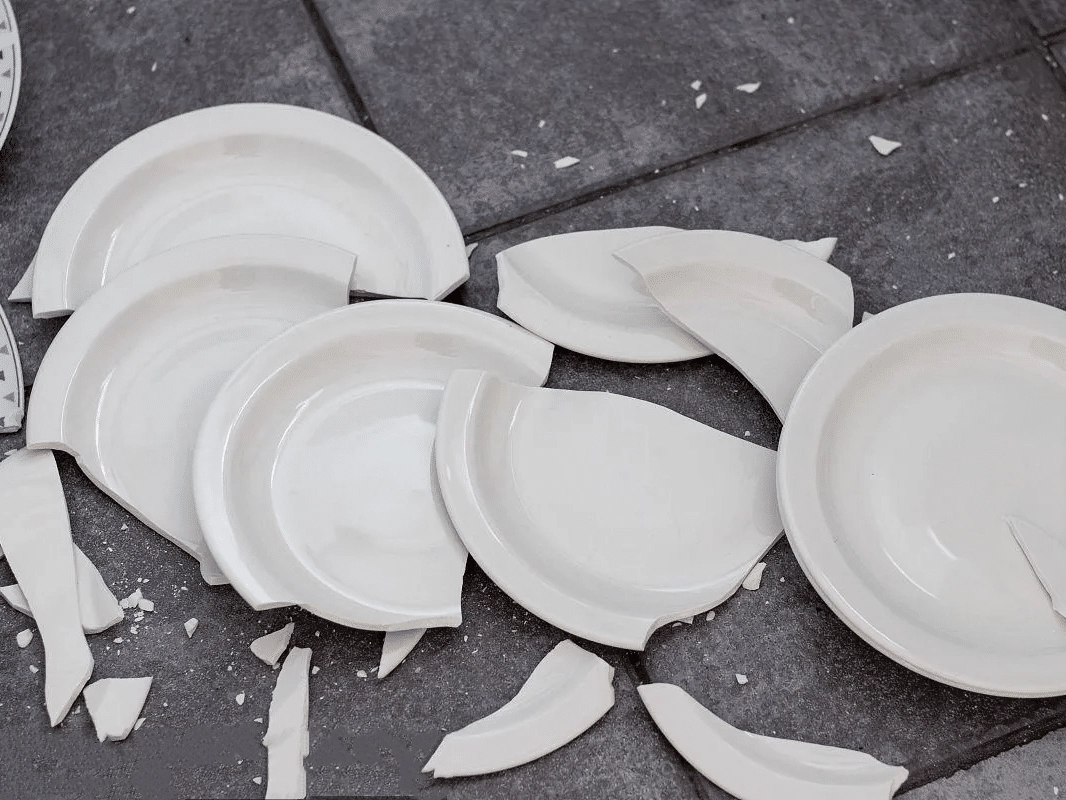
Bulles ou rugosité de la glaçure : Il se peut que la couche de glaçage soit trop épaisse ou que la température soit insuffisante. La méthode d'émaillage doit être optimisée et la température de cuisson doit être affinée.
Écart de couleur : Elle est liée au contrôle de l'atmosphère de cuisson. Il est nécessaire d'utiliser des fours à atmosphère contrôlée et de maintenir la stabilité du processus.
Déformation du produit fini : Causé par un mauvais chargement du four ou une structure de support instable. Notre four personnalisé à haute résistance peut être utilisé pour améliorer l'effet de soutien.
Pourquoi choisir le four automatisé Yutai ?
Yutai s'engage à créer des solutions de cuisson efficaces, économes en énergie et automatisées. Nos produits fours à céramique à haute performance présentent les avantages suivants :
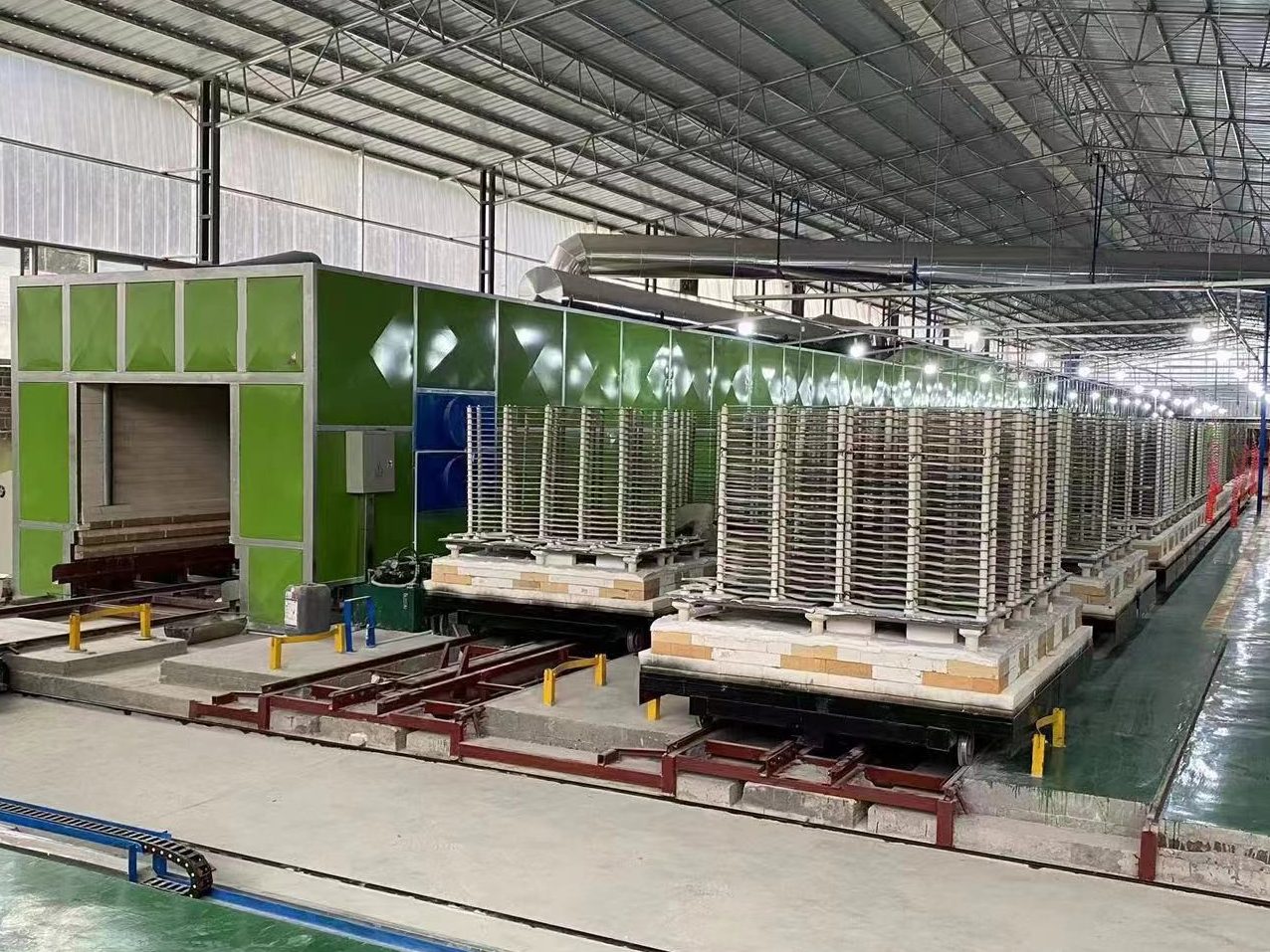
- Structure modulaireLe système d'alimentation en eau potable de l'entreprise, pratique pour une connexion sans faille avec les processus automatiques de vitrage, de décalcomanie, d'emballage et autres.
- Système de contrôle de la température à plusieurs niveaux, contrôle précis de l'ensemble du processus de chauffage, d'isolation et de refroidissement
- Conception à haute efficacité thermiquela réduction effective de la consommation d'énergie
- Panneau de contrôle intelligentLe réglage des paramètres, l'enregistrement des données historiques et l'alerte en cas de défaillance sont pris en charge.
- Forte compatibilités'adapte à une variété de spécifications de produits céramiques, permet de changer rapidement de type de produit
Notre équipement a été largement utilisé dans la production de céramiques à usage quotidien et de céramiques artisanales telles que des bols, des tasses, des boîtes et des assiettes en céramique, améliorant continuellement le taux de rendement et l'efficacité de la ligne de production pour les clients.
Conclusion
La cuisson des céramiques n'est pas seulement un processus, c'est aussi un projet systématique. Le choix de l'équipement et les procédures d'exploitation sont indispensables. S'appuyant sur de nombreuses années d'expérience dans l'industrie, Yutai fournit aux fabricants de céramiques des fours stables, hautement automatisés et économes en énergie et des solutions globales pour aider les clients à créer des lignes de production plus compétitives. Bienvenue sur le site de nous contacter pour plus d'informations sur les produits et l'assistance technique.
